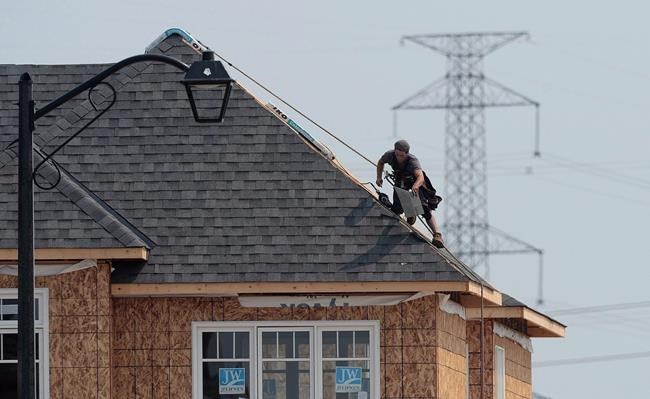CALGARY — Homeowners across the country are spending big bucks to upgrade or enlarge their homes as the reality sinks in that many workers won't be heading back to the office any time soon due to the ongoing COVID-19 pandemic.
However, any renovation plan that doesn't include a thorough review of one's home insurance policy is putting that investment at risk, experts say.
Since the lockdowns began last winter, surging home renovations combined with strong new home sales have driven lumber and wood panel product prices to record highs in Canada.
According to Ratesdotca, a website that earns commissions by comparing insurance rates, more than 16 per cent of respondents to a Canadian survey say they have completed renovation work since the lockdowns began and another 10 per cent plan to start projects soon.
Gen-Xers (born between 1965 and 1980) were among the most active renovators at more than 38 per cent and are the most likely to launch new home reno projects in the next few months.
There are two basic kinds of home insurance risks — paying too much for coverage you don't need and paying too little and having insufficient coverage, said Insurance editor Liam Lahey of Ratesdotca.
“If you’re underinsured and you go to file a claim — say if something bad happens, like a flood or a fire — and they didn’t know about these new additions to your home, you might not be covered and you could be out of pocket and these costs could be very, very expensive,” he said.
Conversely, he added, “some renovations may lower your premium, if those improvements reduce the risk to your property.”
Insurers recommend contacting your broker or insurance agent before renovating to make sure you're covered. And once a year, possibly at renewal time, ask for an assessment of your current insurance policy and premiums to make sure they still match your needs.
Homeowners should also make sure their renovation contractor has the proper insurance and workers' protection, said Kevin Lee, CEO of the Canadian Home Builders’ Association.
“What if someone falls off your roof and they don’t have workman’s compensation? That could end up being you who’s responsible for that,” he said.
“What if you have something happen and there’s damage to someone else’s property? That becomes very likely an issue for you and your insurance.”
Involving a professional contractor from the start will help with project design and warranty, realistic cost estimates and possibly incorporating energy efficiency technology.
A good contractor will know the latest building codes, will be able to schedule the project to account for municipal inspections, will anticipate problems based on the age of the house and may even be better able to source scarce building materials in the current overheated market, Lee said.
“One thing we always recommend for anything even remotely complex is that you think about hiring a professional who will provide you contracts, written quotes, take care of the permits, warranties, all that sort of thing," he said.
A key question is what's behind that wall? A reliable contractor will know what to do if there's leaking water, rot and mould, structural issues, electrical problems or other unwelcome surprises.
Home insurance is generally intended to cover the cost of replacement, Lahey said, and that means expensive finishes such as marble, hardwood and granite will cost more to insure.
Installing swimming pools or hot tubs increase the replacement value but also boost the risk of water damage or a liability claim if someone drowns or is injured. Similarly, a wood stove or fireplace means a greater risk of fire.
Upgrading your electrical, heating or plumbing systems, on the other hand, reduces the risk of damage and could result in a lower premium, Lahey said, as could installing a new roof to better protect against the elements.
During the pandemic, some people have taken in tenants to help with the mortgage but the policy should be adjusted to reflect that, insurers say, adding tenants should have their own insurance.
This report by The Canadian Press was first published Oct. 22, 2020.
Dan Healing, The Canadian Press


